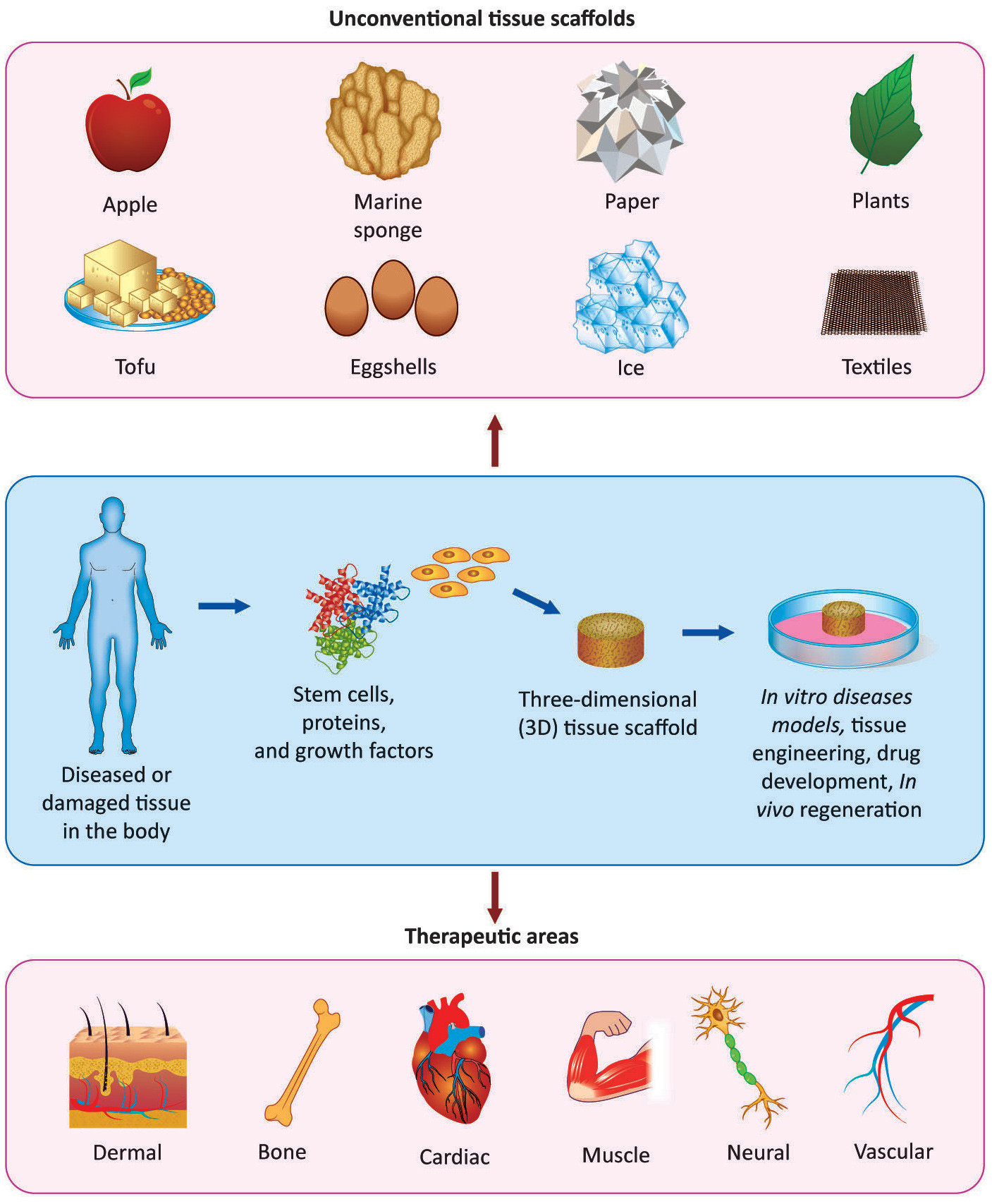Researchers from the University of Massachusetts (USA) have studied the possibilities of using various natural materials to create artificial organs suitable for transplantation. In 3D printing of a living organ, a supporting structure, or matrix, is first created on which the patient’s own living cells can then grow. Now this supporting structure is printed on 3D printers from scratch from rare and expensive components. Instead, American scientists suggest using materials found in nature. This was reported by Trends in Biotechnology.
Researchers say that the high price of the materials that make up the skeleton of an organ for transplantation, as well as the sufficiently long time required for 3D printing of such a skeleton, sometimes force doctors to refuse surgery.
To speed up and reduce the cost of the process, scientists decided to turn to natural materials, the structure of which is well suited for this task. So, researchers from the Worcester Polytechnic Institute (USA) found that the structure of the veins on the spinach leaf is very similar to the structure of the vessels of the human heart. Removing spinach cells from the leaves, they obtained a framework or matrix for growing heart tissue.
- In a new approach to tissue engineering to create implants, unconventional materials are connected in vitro with the molecules of the body
- © Nguyen and Camci-Unal / Trends in Biotechnology
Scientists have also experimented with other natural materials. It turned out that some of them have additional useful properties. So, a matrix made of tofu (soy protein) facilitates wound healing, and the inclusion of egg shell powder in the supporting base of an artificial organ accelerates the restoration of bones and nerves, since the egg shell contains a lot of calcium.
“Some new tissue engineering methods can be very expensive, others require a long and thorough optimization to create three-dimensional bases for implants. We turn to nature in search of existing materials and try to find out how they can be used in tissue regeneration. We mainly strive to simplify the process and use readily available materials that are compatible with the fabric, ”says the main author of the work, Dr. Gulden Kamchi-Unal.
Researchers also point to the environmental friendliness of the new method. However, scientists note that all their experiments have so far been carried out only in laboratory conditions, and attempts to test new technologies in animals and humans will require the development of the necessary regulations and protocols, as well as a thorough check for the safety and biocompatibility of a large number of substances.

